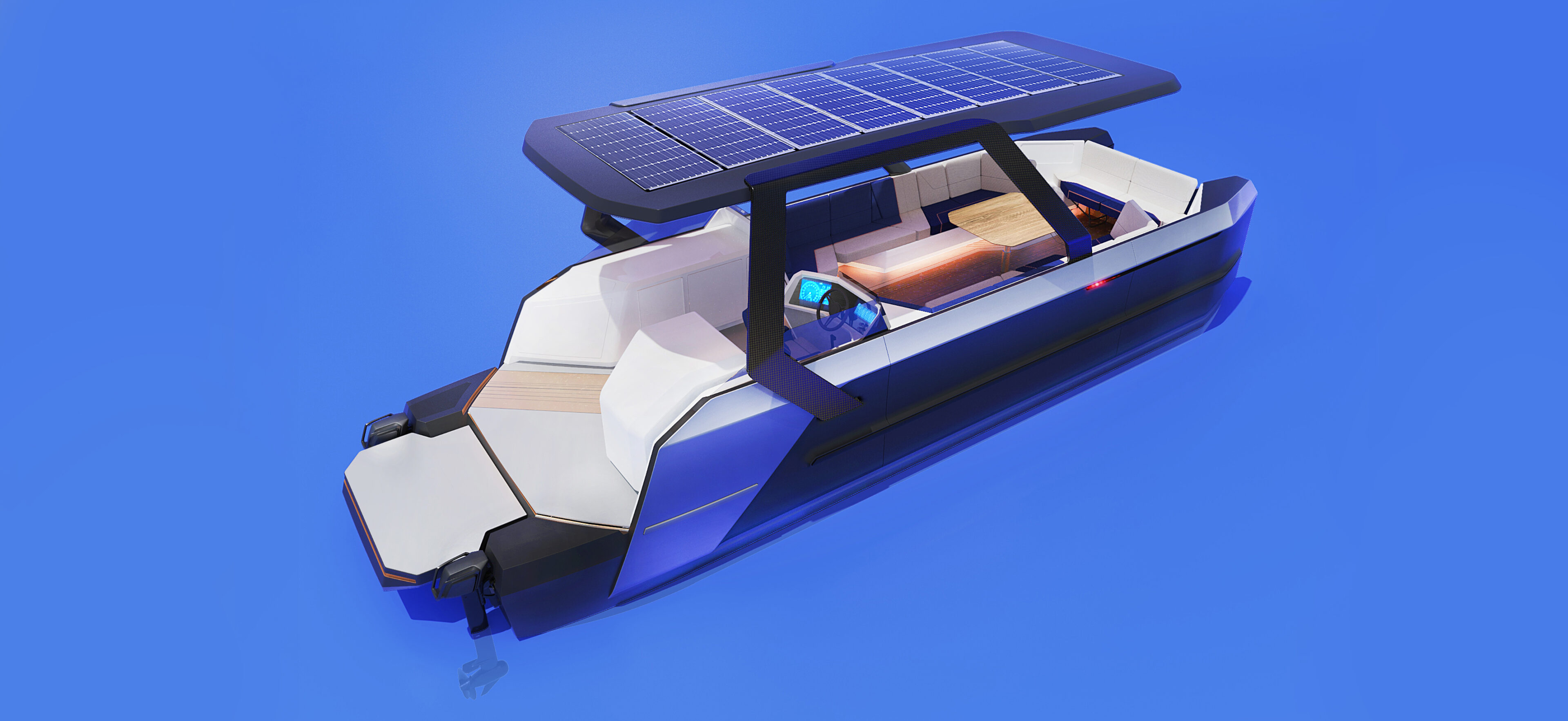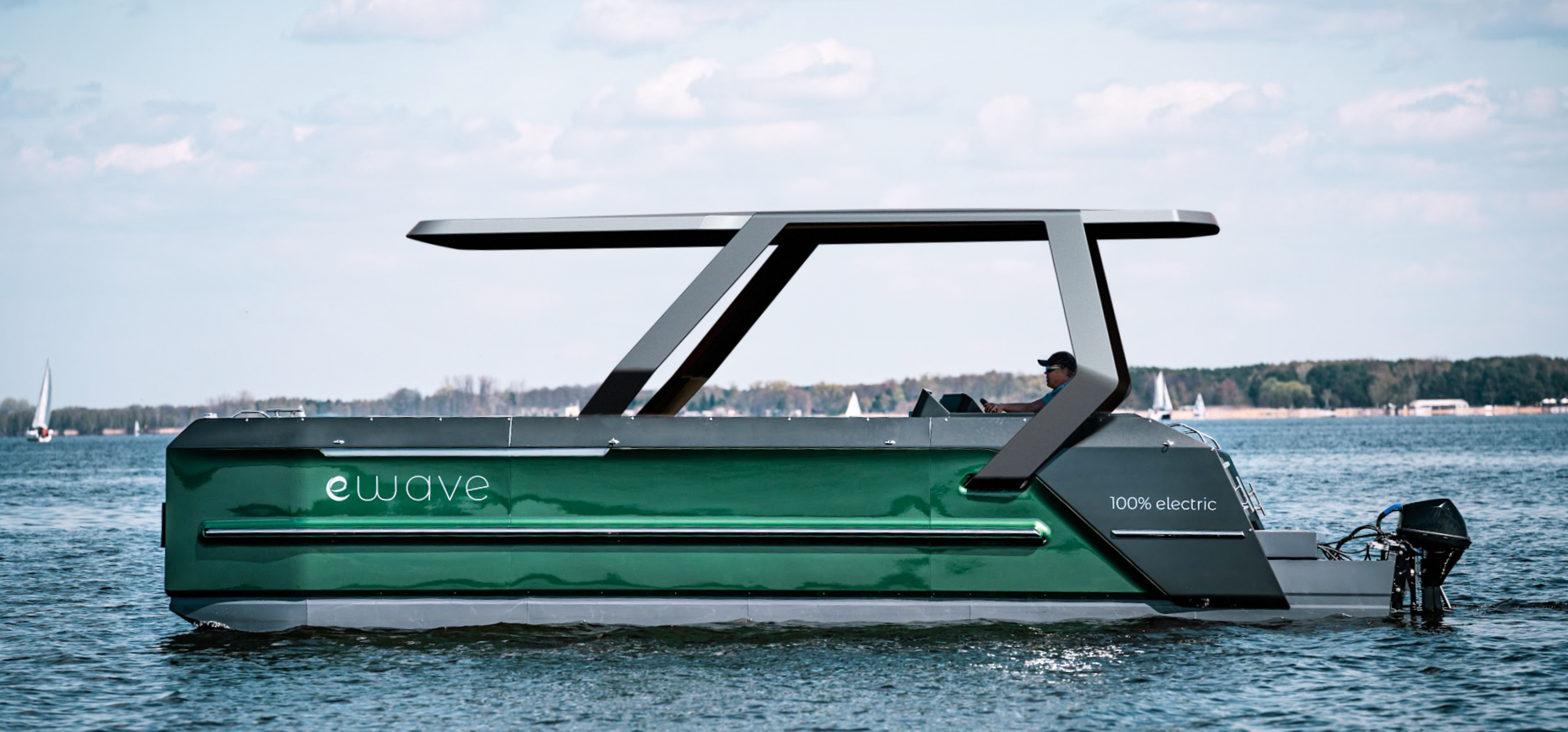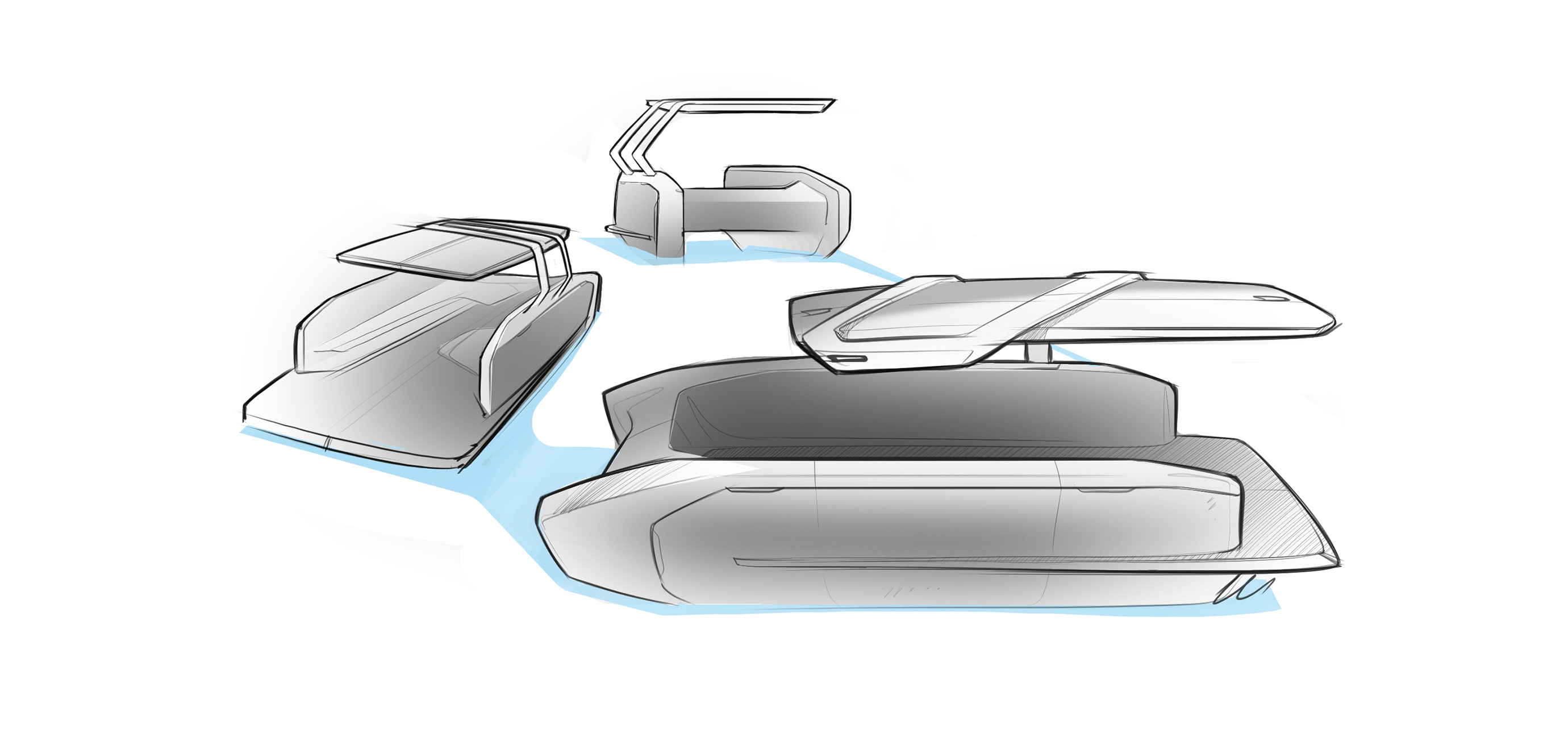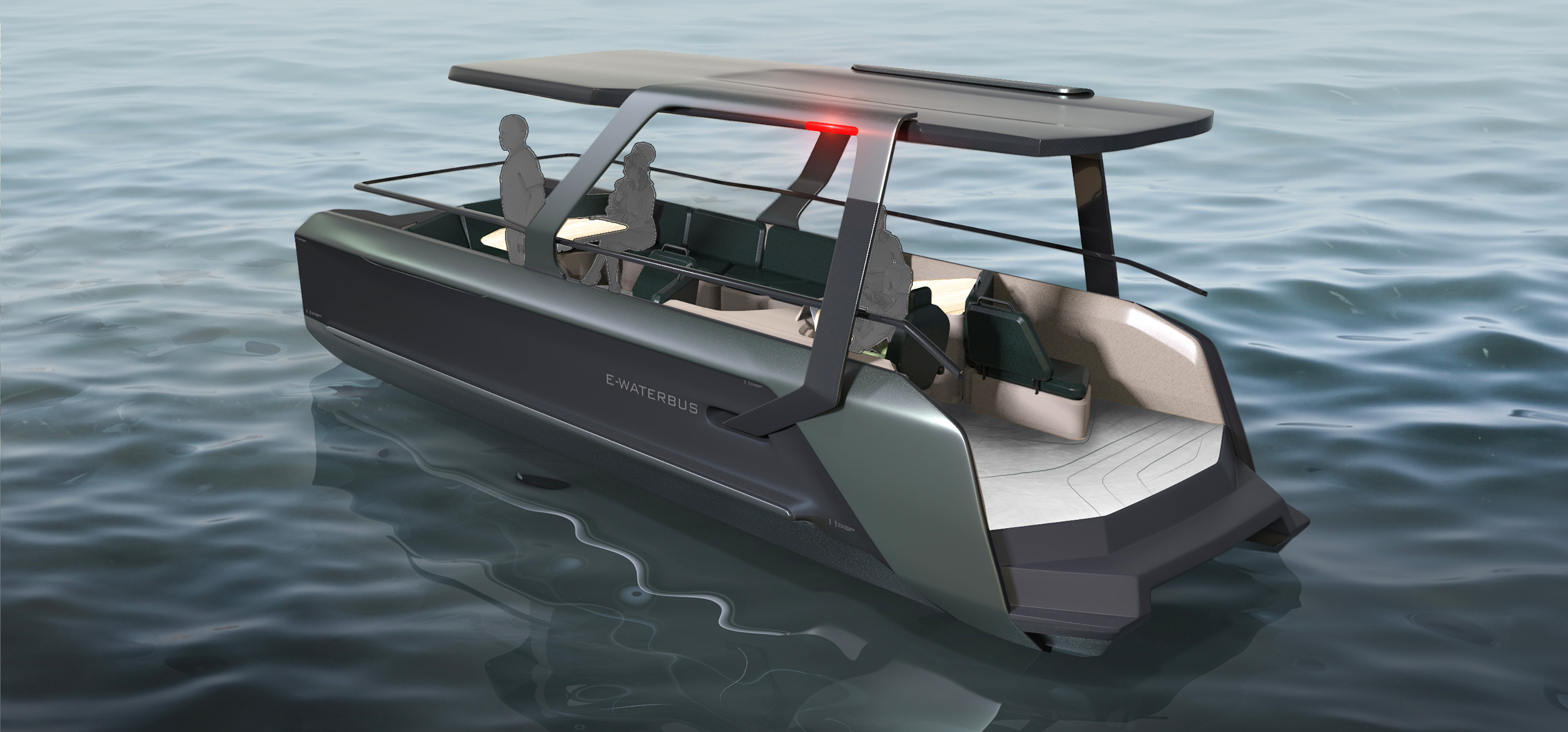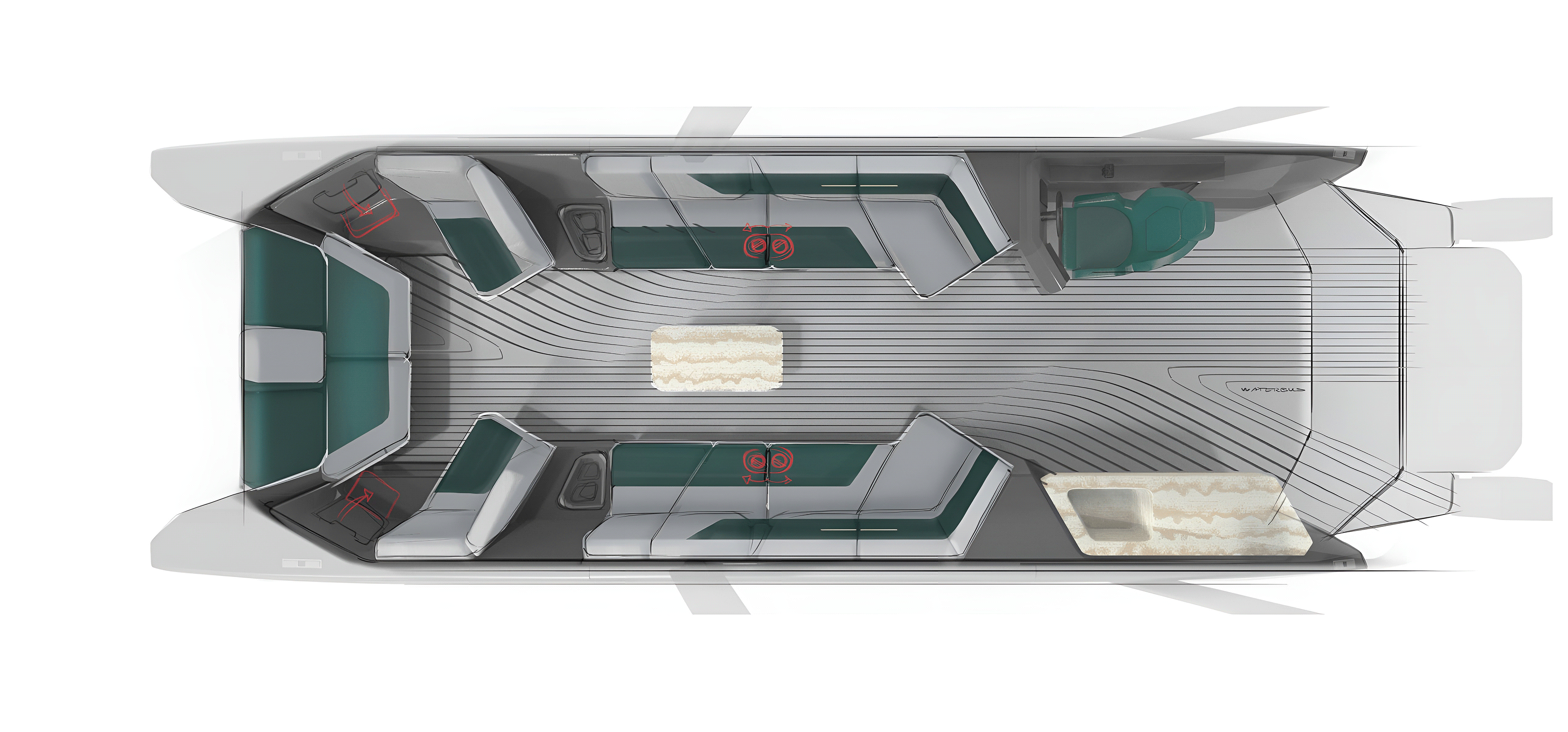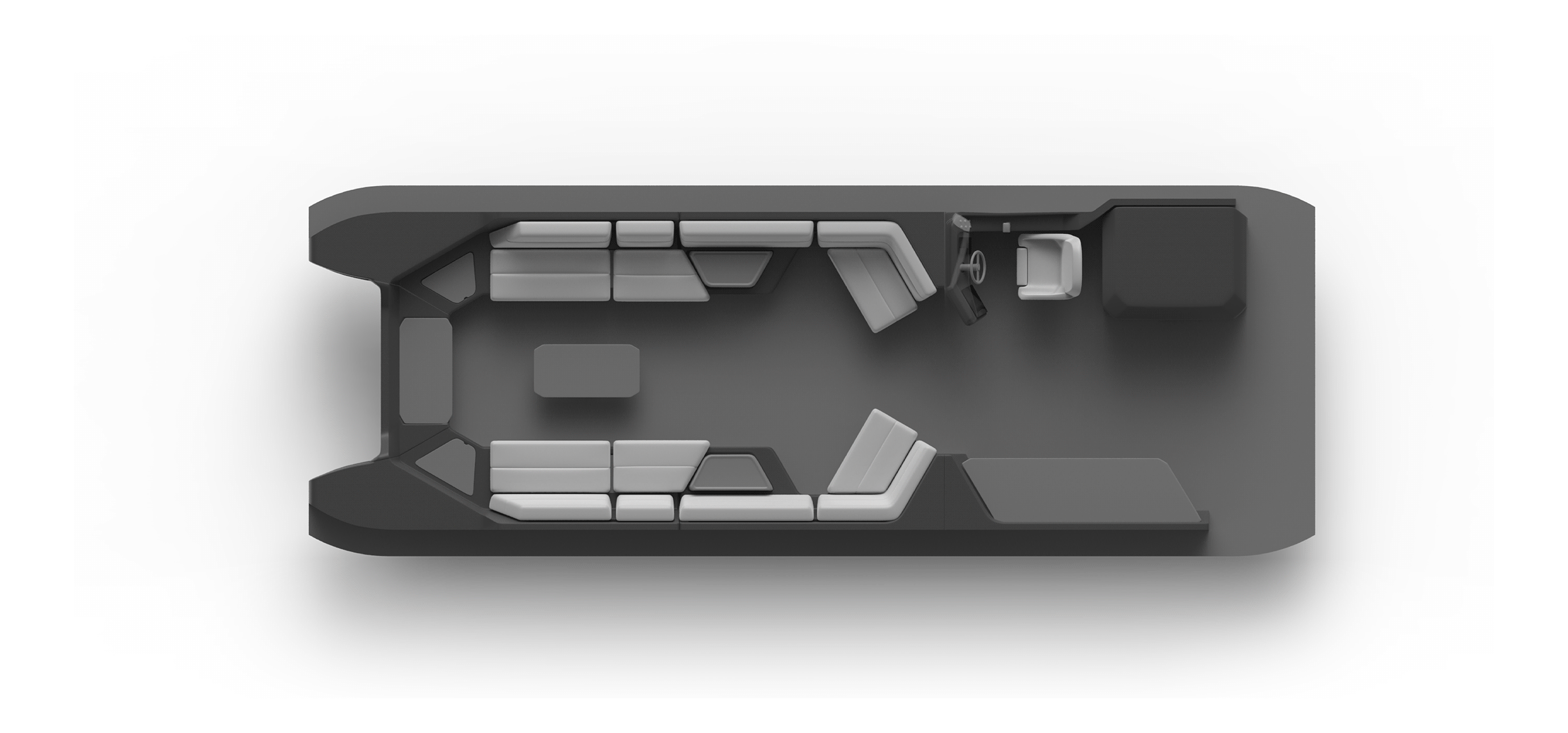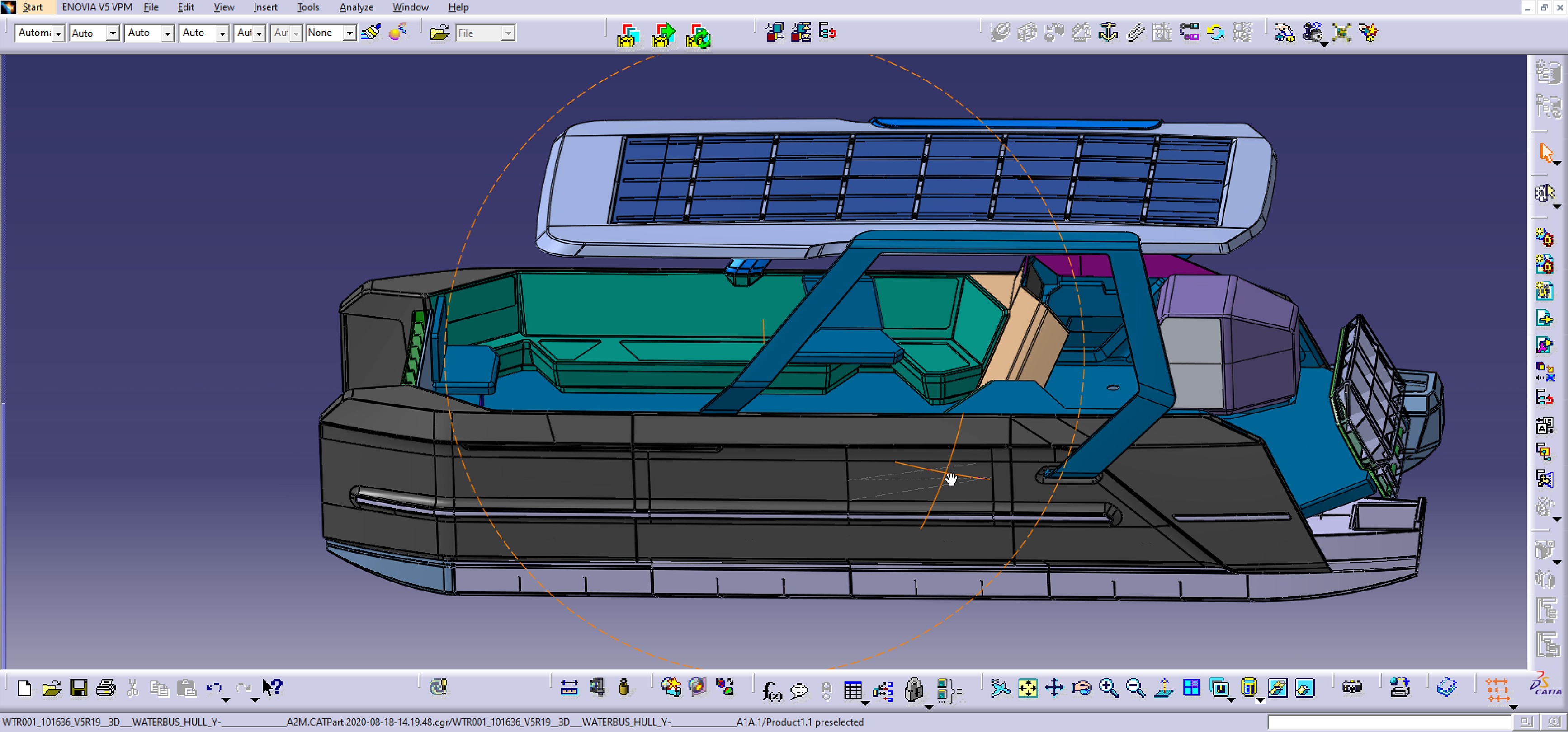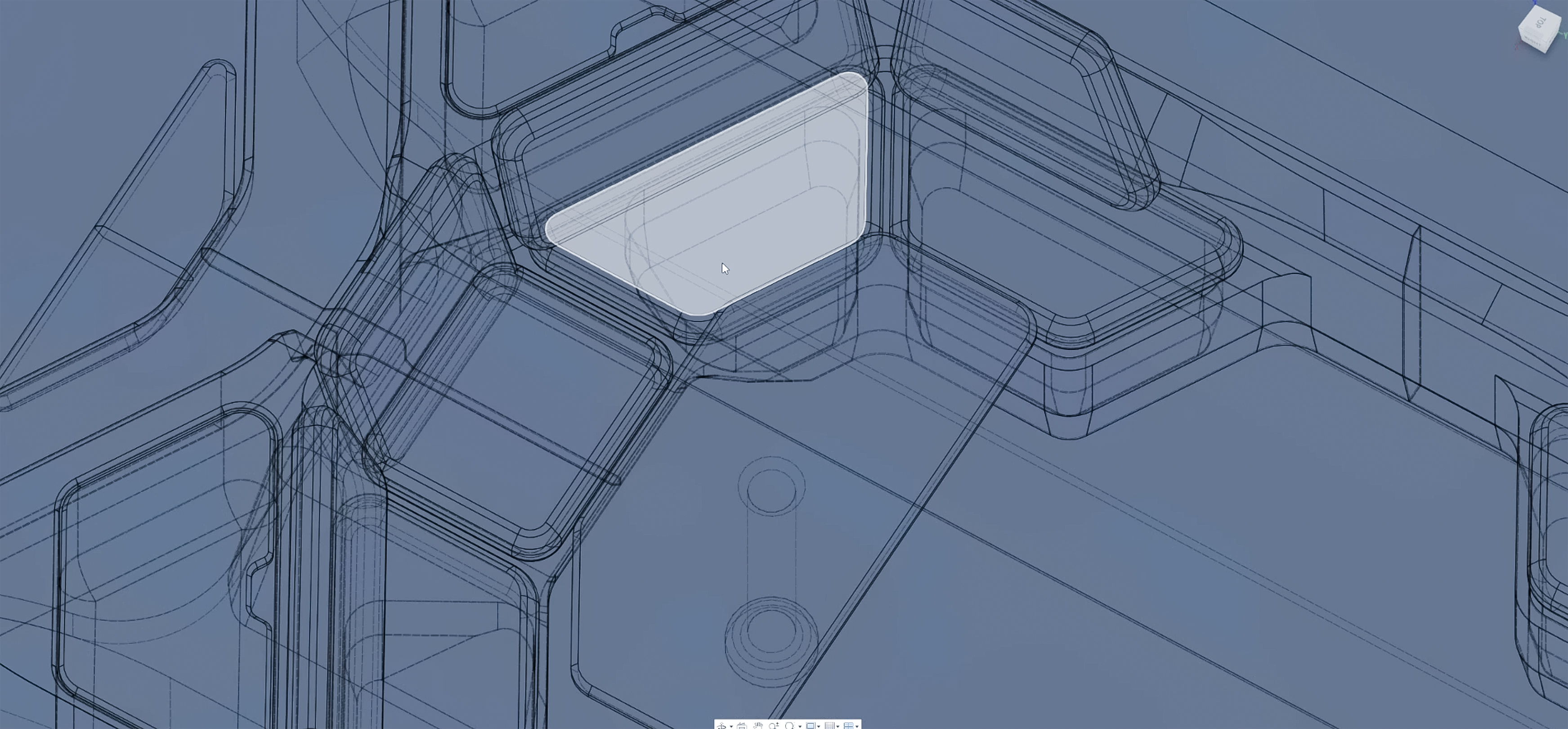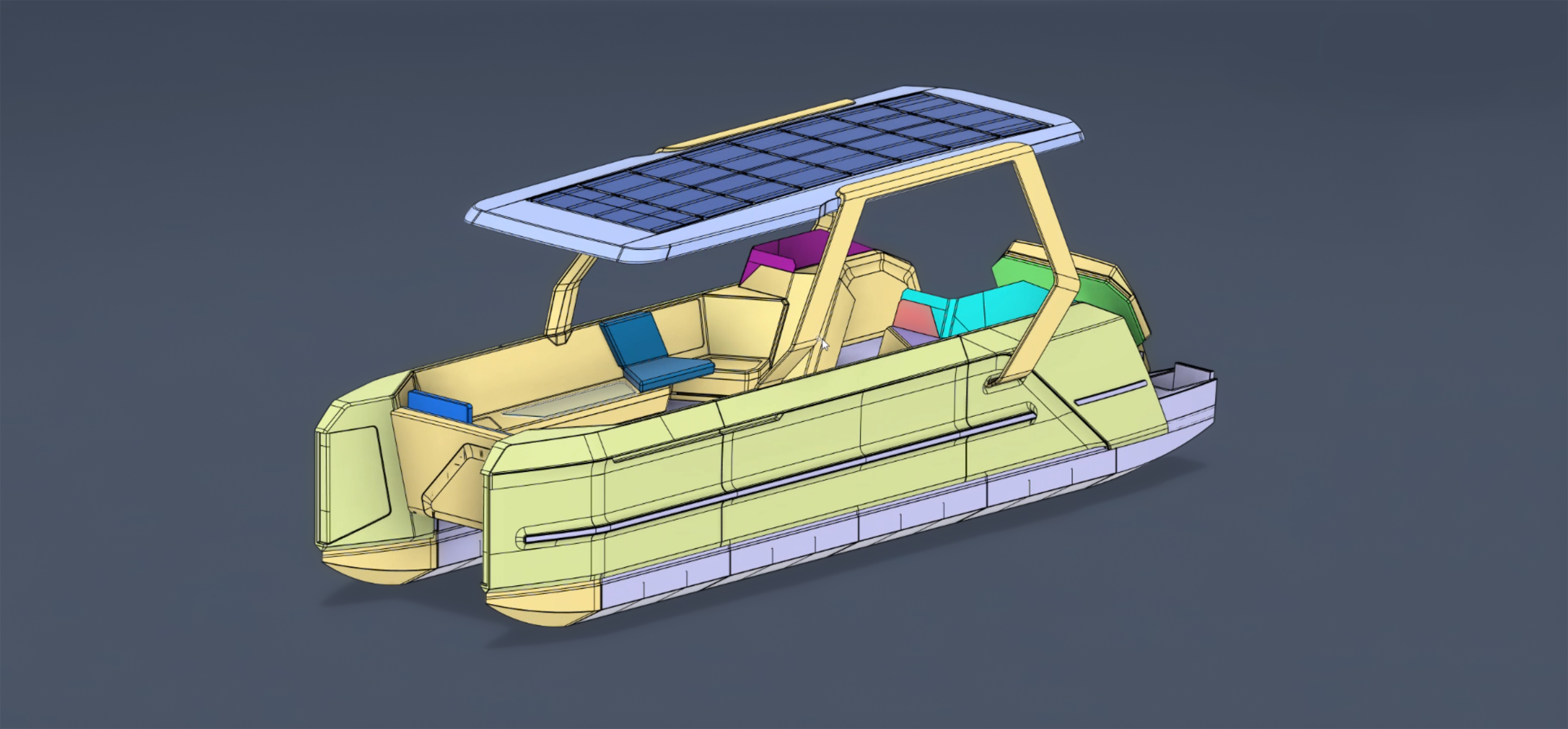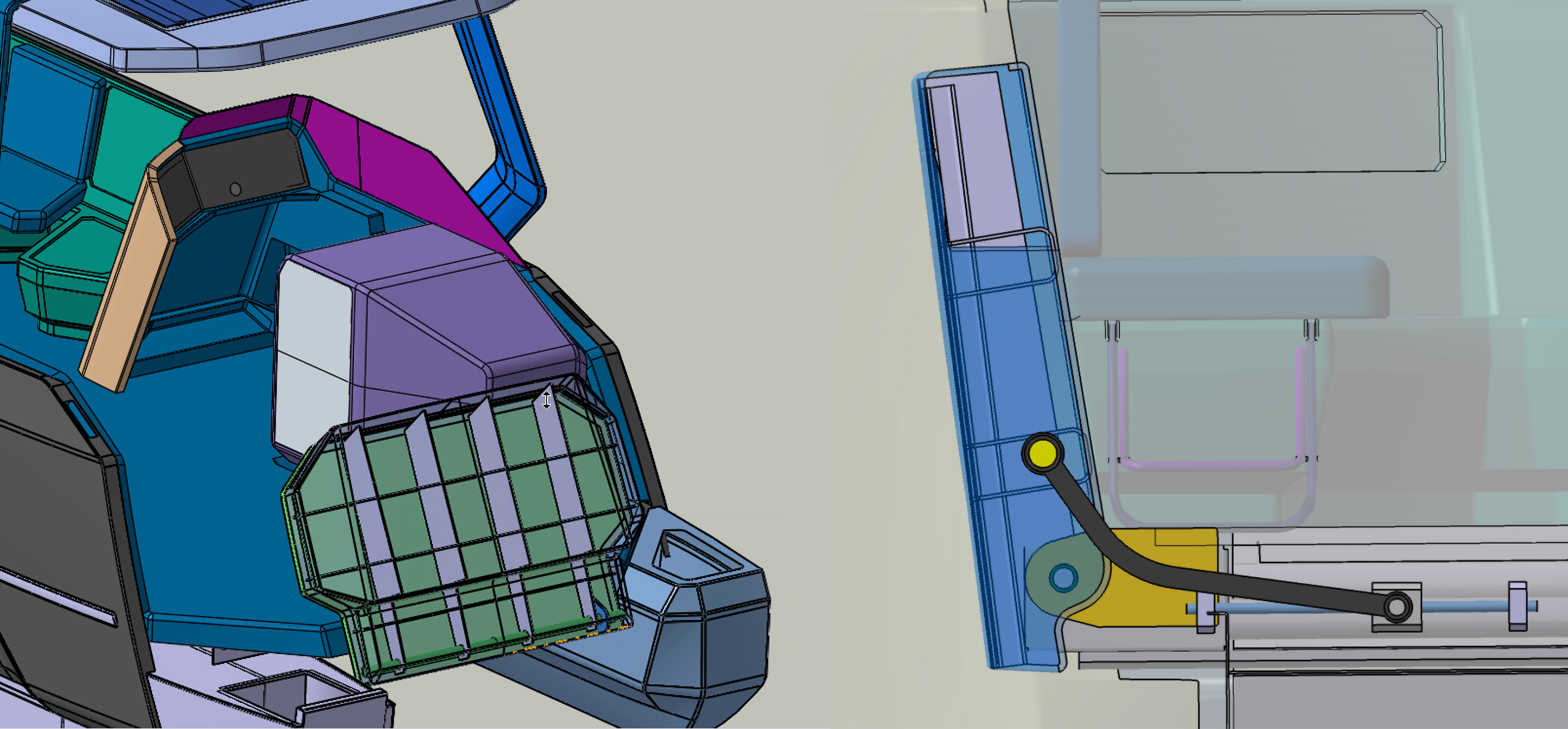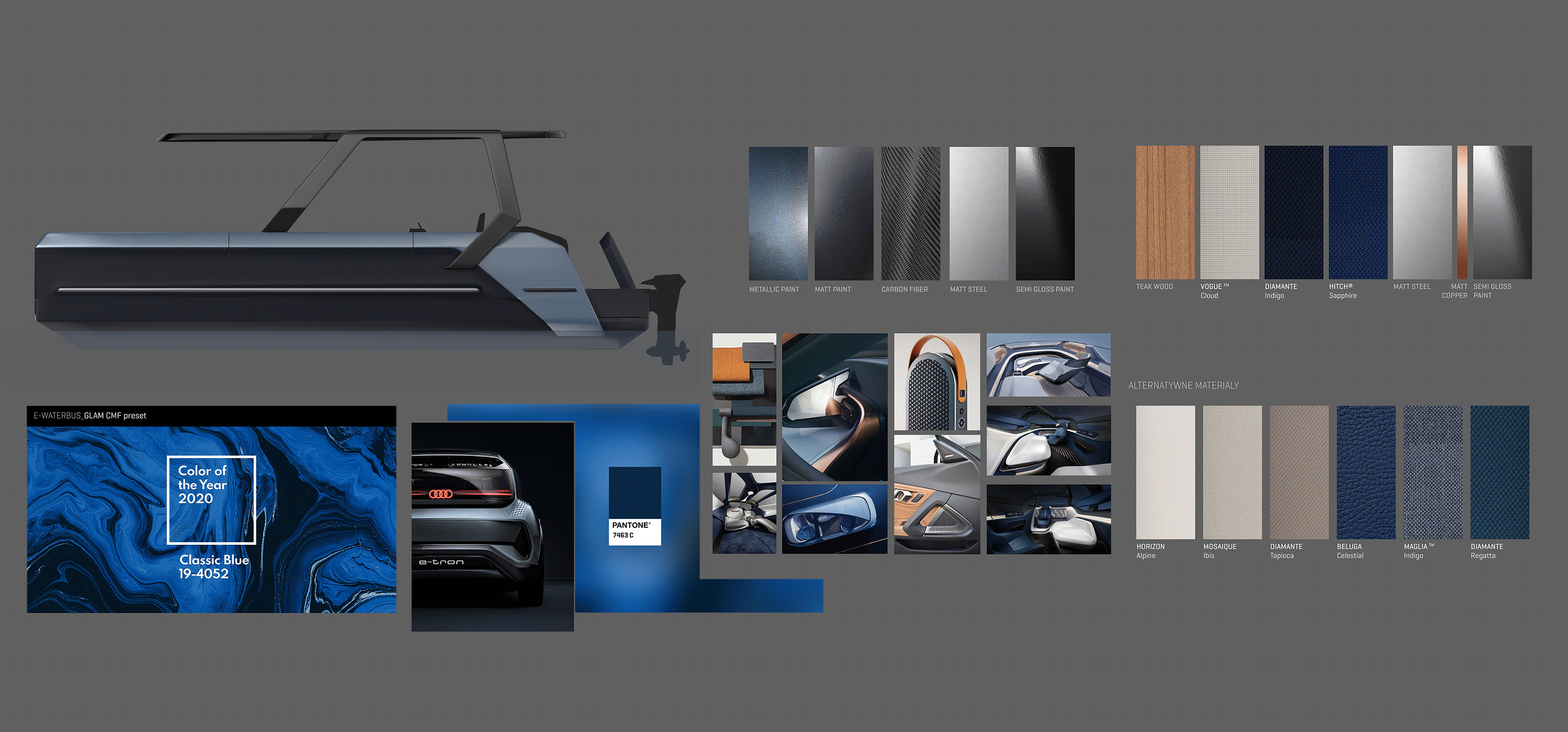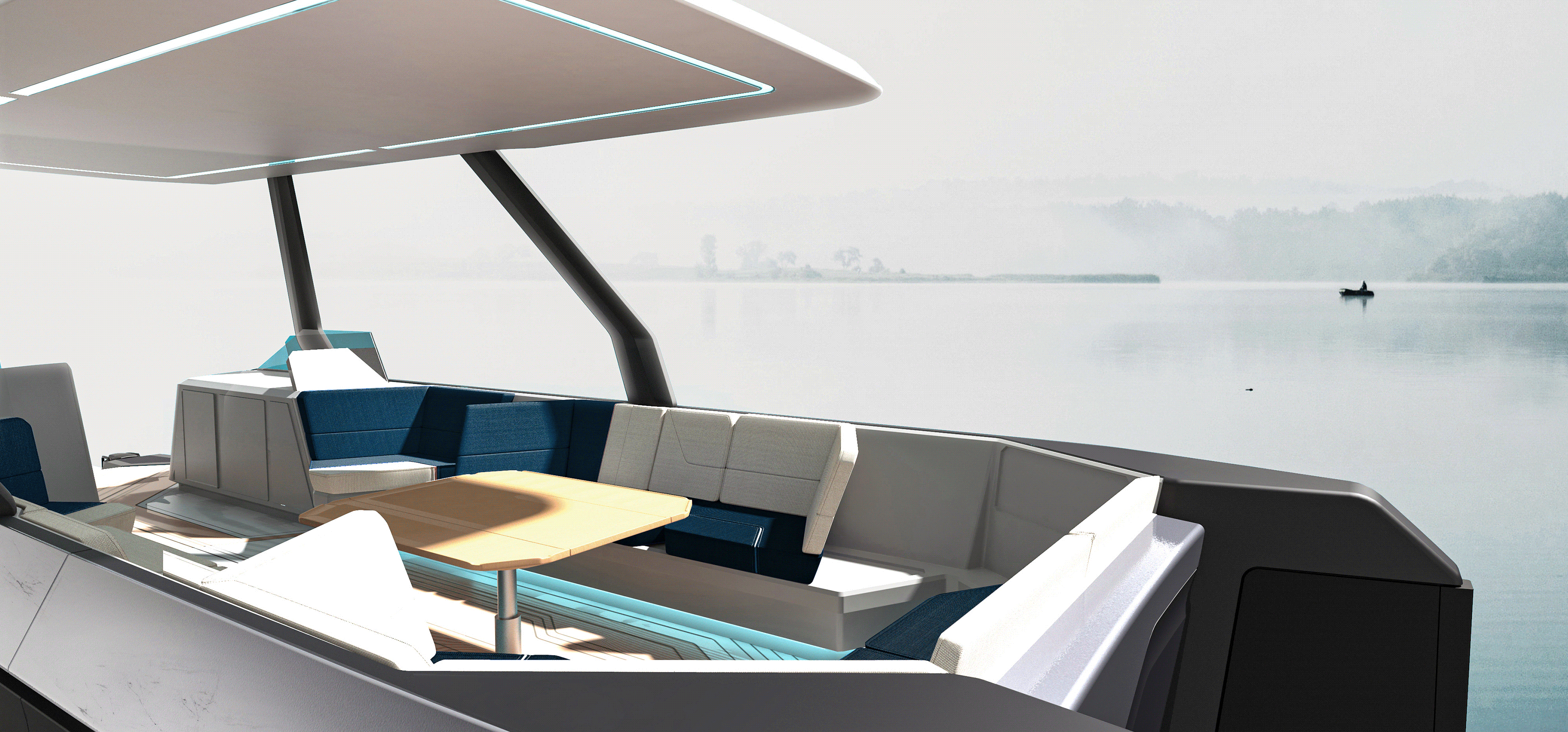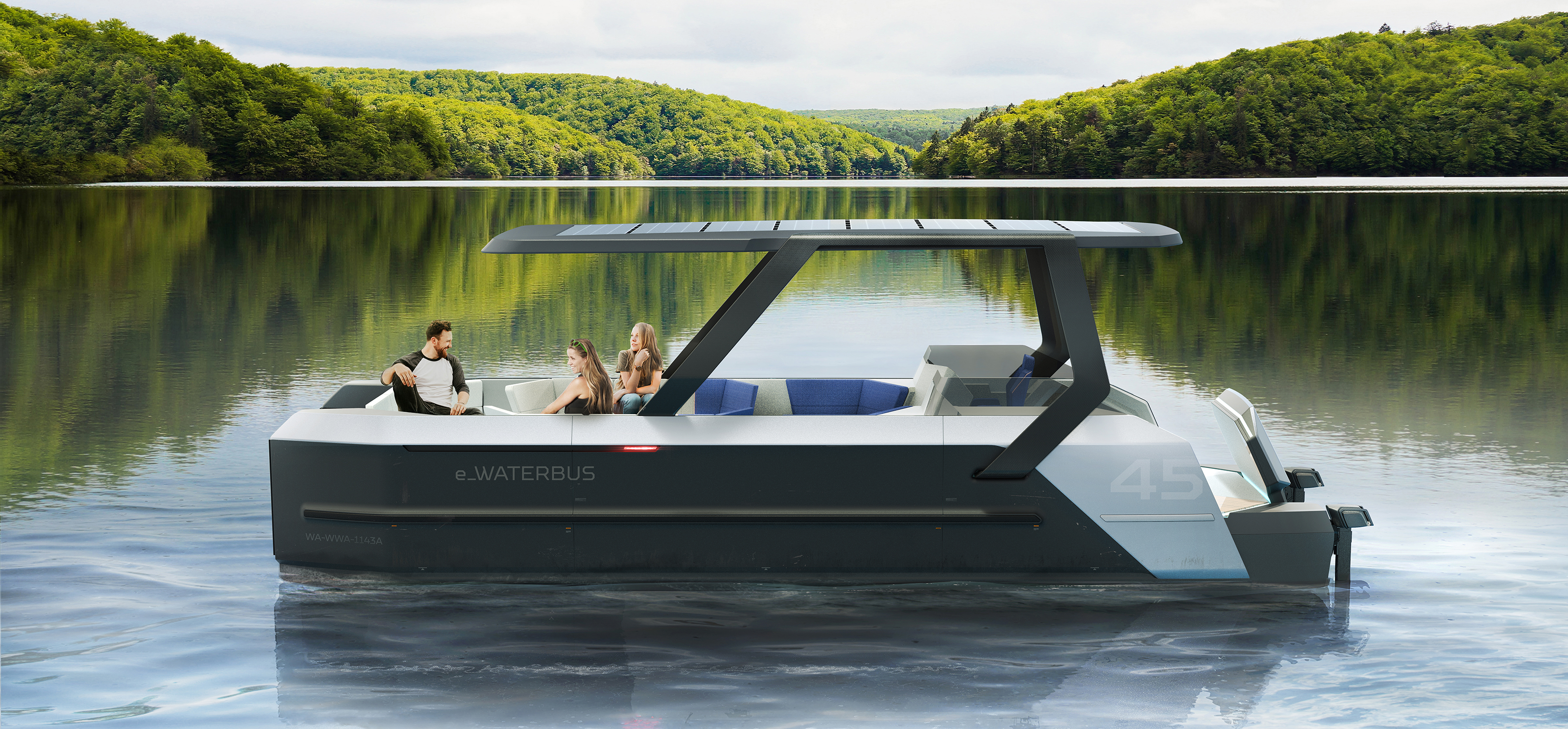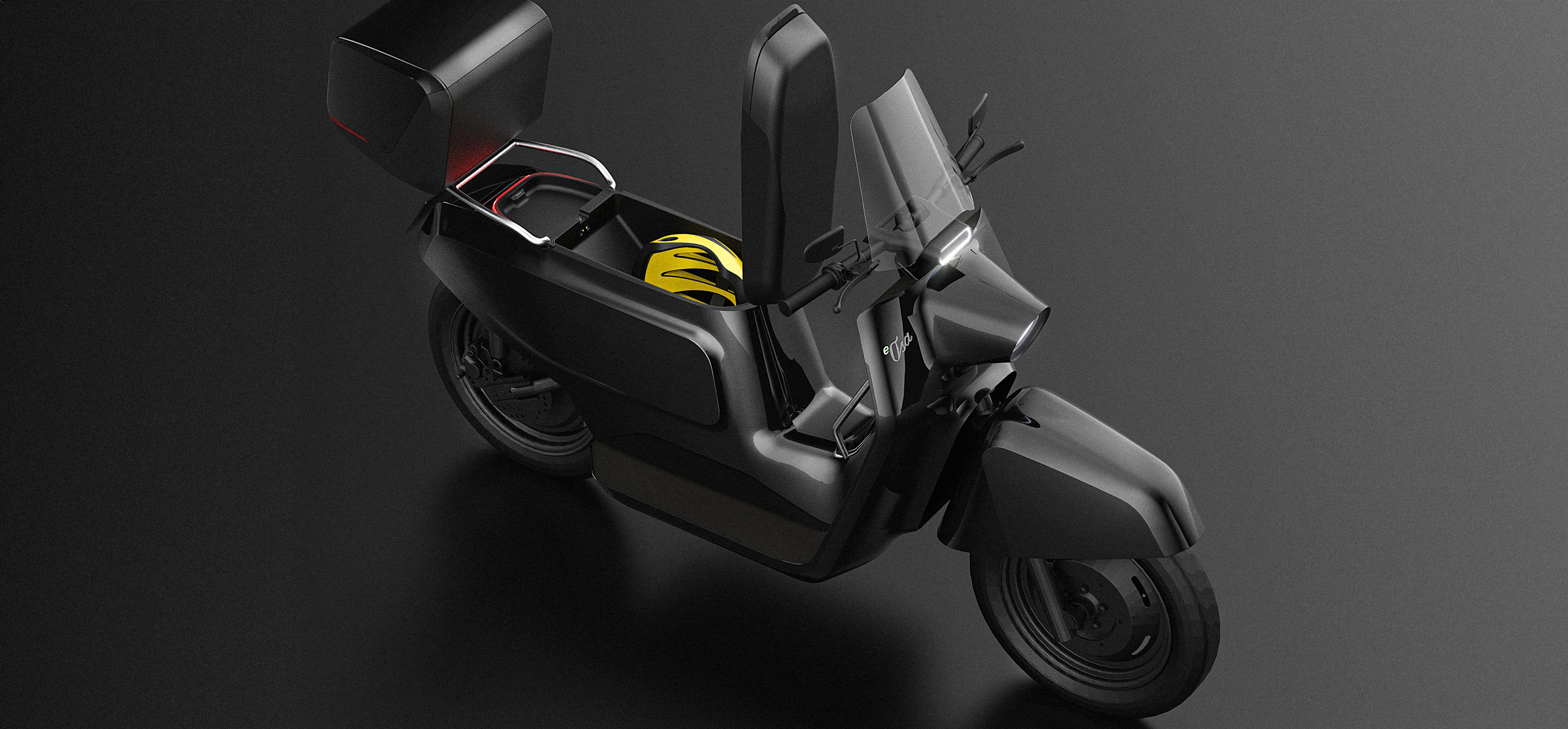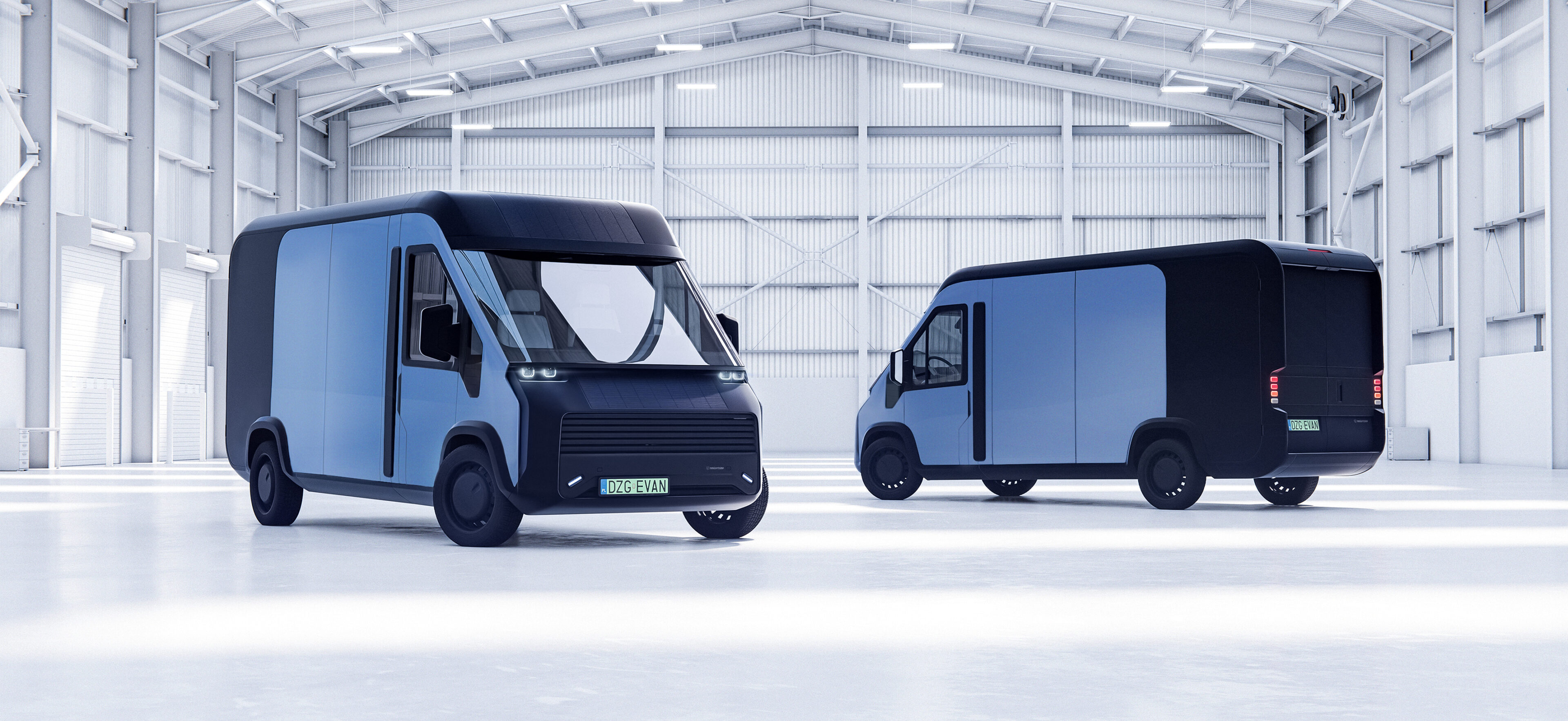Client: eWAVE sp. z o. o.
Year: 2022
eWAVE represents a pioneering advancement in electric marine technology, heralding a transformative era for watercraft. Through our collaborative efforts with eWAVE YACHTS, we have designed an innovative electric-powered catamaran that stands out from the competition.
The outcome we managed to achieve is a unique electric catamaran harmonizing aesthetics with performance, establishing new benchmarks within the water transportation sector. eWAVE provides a preview of the future of sustainable water travel - efficient, silent and functional.
CLIENT’S FEEDBACK
“In designing our first yacht with electric propulsion, we looked for designers who could combine
functionality and ergonomics on one hand, and on the other hand - modern design that emphasizes the ecological nature of our vessel. Among several potential contractors, after many conversations and analyzing preliminary ideas for the yacht concept, we chose EXEON. They are a group of young ambitious people who understand the needs of the client and can implement them into their projects. In addition to their passion, they also possess vast knowledge in design and engineering, while not being afraid of unconventional, visionary solutions. Combining EXEON's ideas with the user requirements imposed by the eWave shipyard - resulted in the creation of the eWave 9000 tourist catamaran, which is now available on the market and setting sail for the open waters."
[1.0] Concept Ideations
Info
Our journey with eWAVE commenced with initial sketches, serving as a springboard for exploring diverse directions in defining the general character of the catamaran. Embedded within our efforts from the outset were core values emphasizing a futuristic perspective and the ushering in of a new era in water transport. Our objective was to introduce ideas imbued with a modern sensibility, resonating with the essence of innovation and progress.
[1.2] Concept Development
Info
After determining our primary design direction, our goal was to deeply engage with the dynamic realm of marine mobility. Our team identified the unique requirements of electric marine units, characterized by extensive brainstorming sessions where numerous design approaches were proposed and evaluated. Our aim was to conceptualize a catamaran that fulfilled the practical needs of the users but also exemplified our Client's values of sustainability and innovation.
[1.3] Concept Variants
Establishing the initial design DNA of the eWAVE catamaran was a key aspect of the design process.
Info
This involved exploring numerous iterations of sketches from various angles and viewpoints to identify the most promising direction for further development. Each iteration allowed us to refine our understanding of the catamaran's essence and distill it into a cohesive design language.... Read more Through this iterative approach, we aimed to create a comprehensive visual repertoire that would guide our creative exploration. By examining the catamaran from diverse perspectives, we gained deeper insights into its form, function, and character. This process helped refine our design concepts, laying a strong foundation for further innovation and development.
[1.4] Concept Refinement
Info
In the final stage of concept review, we prepared numerous detailed sketches incorporating intricate design elements such as lighting, colors, and even branding. These sketches provided more realistic views, which played a pivotal role in the decision-making process regarding the concept selected for further development.
[2.0] Detailed 3D Concept
Info
In this phase, we transitioned the selected concepts into a 3D environment, which proved important for grasping the full scope of the design beyond 2D sketches. This step enabled us to confirm our initial design assumptions made at the outset of the process. By visualizing the forms in three dimensions, we gained a deeper understanding of their potential and feasibility.... Read more As the design evolved within 3D space, it acquired additional details that enhanced its realism, essential both for client reviews and engineering development. These enhancements included refined surface details, smoother transitions between elements, and the integration of extra components.
[2.1] Detailed 3D Visualizations
Info
As the design's shape and direction became clearer, it was time to prepare and verify concepts with the higher level of detail and realism. This process involved the use of 3D visualization techniques. This approach allowed for a comprehensive evaluation of the quality of details within the design. It helped to identify which areas are well proportioned, and which areas still need further development. By doing so, we can focus our efforts on enhancing those aspects that require additional refinement.
[3.0] Functional Mock-up
Constructing the physical prototype provided us with invaluable insights into the overall feeling of space and the scale of the project.
Info
It enabled us to immerse ourselves fully in the design, facilitating hands-on evaluation and adjustments to the original concepts. Moreover, the physical mock-up served as a platform for collaborative evaluation, allowing stakeholders to provide input and feedback based on real-world interaction with the design. This iterative process fostered a deeper understanding of eWAVE's design nuances and functionality, ensuring that all aspects were thoroughly scrutinized and refined before progressing to subsequent stages of development.
[4.0] Interior Modularity
The initial design concept prioritized the creation of a catamaran capable of seamlessly catering to a wide spectrum of user needs.
Info
This emphasis guided a focused approach towards interior design, emphasizing modular functionality and adaptability to address a range of scenarios. Consequently, users are empowered with the flexibility to effortlessly reconfigure the interior by reattaching specific upholstery elements, facilitating transitions between classical layouts, sunbed arrangements, and dining setups around the table. ... Read more This dedication to modular versatility ensures that the catamaran interior remains dynamic and responsive to evolving preferences and activities on board. By incorporating this adaptable design philosophy, eWAVE maximizes usability and enhances the overall user experience, offering unparalleled convenience and comfort for various recreational and leisure pursuits.
[4.1] Interior Concepts
Info
Armed with insights from our examination of physical mock-ups and initial concepts surrounding interior modularity, we delved into more detailed phase for eWAVE's interior design. During these phase rudimentary concepts transformed into more detailed sketches, infused with vibrant colors and textures.
[4.2] Interior Development
Info
Following an analysis of the initial, ideas, and physical mock-ups, a specific interior configuration emerged as the most promising in terms of transformability and responsiveness to user needs. Our priority was to ensure optimal comfort for users in various scenarios, whether cruising or enjoying leisurely moments on a sunbed amidst the tranquility of a lake, surrounded by nature's beauty.
[5.0] Technical Feasibility
Info
Undertaking a technical feasibility study played a pivotal role in evaluating the practicality of our design concepts and engineering solutions. This thorough assessment encompassed various facets, including the structural integrity of eWAVE, assembly sequencing, and manufacturing metrics. Through this analysis, we consulted our solutions with Client's technical team to evaluate technical feasibility of our design while pinpointing areas requiring further refinement.... Read more Additionally, the feasibility study shed light on the manufacturability of the catamaran, ensuring that our innovative design could be effectively realized within the parameters of production capabilities and cost constraints.
[6.0] Surface Development
Info
The next step involved integrating the design with engineering requirements. Our engineering team redraw all the surfaces in parametric CAD environment CATIA V5. This incorporation of engineering constraints significantly enhanced the overall feasibility of the project and introduced some minor modifications. By this stage, the design had already evolved to its nearly final form.
[6.1] Detailed CAD Modelling
Info
When it comes to surface modelling our team precisely modeled the surfaces for both aerodynamic efficiency and aesthetic appeal using CAD software.
[6.2] Engineering Development
Info
Several of the mechanical solutions have been developed and integrated with the parametric surface design. These mechanisms included engineering concepts for regulated traps, seating arrangements as well as foldable toilet module.
[7.0] CMF Guidelines
Info
CMF (Color, Material, and Finish)—these three pivotal elements have influenced the essence of eWAVE's design. As our journey unfolded, it became clear that the precise combination of these elements would not only shape the catamaran's aesthetics but also significantly impact its practicality.... Read more Our team embarked on a deep exploration of materials, aiming to strike a delicate equilibrium between durability and sustainability. Every choice we made resonates with eWAVE's innovative spirit while prioritizing seamless production feasibility. We carefully selected materials that are robust enough to withstand the rigors of the marine environment while also being gentle on our planet's delicate ecosystem.
[7.1] CMF Interior Variants
Info
In establishing the CMF specifications for future work, visualizing how they would appear on specific elements of eWAVE proved invaluable. To select the most suitable style, we experimented with various options through detailed sketches that comprehensively accounted for all factors. This approach provided greater clarity and assistance in decision-making processes.
[8.0] Detailed Interior
Info
After finalizing all CMF details, it became essential to incorporate these principles into the complete design of the catamaran, particularly the interior. The interior is a vital aspect from the users' perspective since it is where they spend the majority of their time onboard. Integrating these design elements seamlessly was important to inform further prototype development.
[9.0] Prototype Development
The evolution from digital models to a physical catamaran marked a significant juncture in the eWAVE project.
Info
Throughout this phase, real-time testing and adjustments offered invaluable insights into the catamaran's production processes and usability, crucial for enhancing the final production version.
[10] Production Version
Info
Transitioning from prototype to manufacturing for the production version of eWAVE required a seamless process, with a focus on scalability, cost-efficiency, and quality control. This phase represented the culmination of our collaborative efforts with eWAVE YACHTS, guiding the transition to the catamaran serial production.
[10.1] Production Interior
Info
eWAVE interior in its production version, accurately showcases the design ideas developed and refined by our team. Looking at the precisely crafted details of the floor surface, upholstery stitching or ambient lighting accounts for all the team's efforts engaged in the project.
[12] Realistic Visualizations
As the physical prototype of eWAVE took shape, high-quality visualizations played a vital role in captivating potential customers.
Info
These renderings provided a realistic representation of the catamaran's design, illustrating its features and capabilities in various scenarios. Leveraging detailed visualizations, we effectively communicated the value proposition of eWAVE, igniting excitement and anticipation for its upcoming market launch.
[13] Promotional Materials
Info
In addition to the lifelike and high-quality renderings, we created a series of visualizations with a more abstract nature. These visuals emphasized the innovative and modern style, reflecting the core values that served as the driving force behind the inception of the project.
DESIGN & Engineering TEAM
